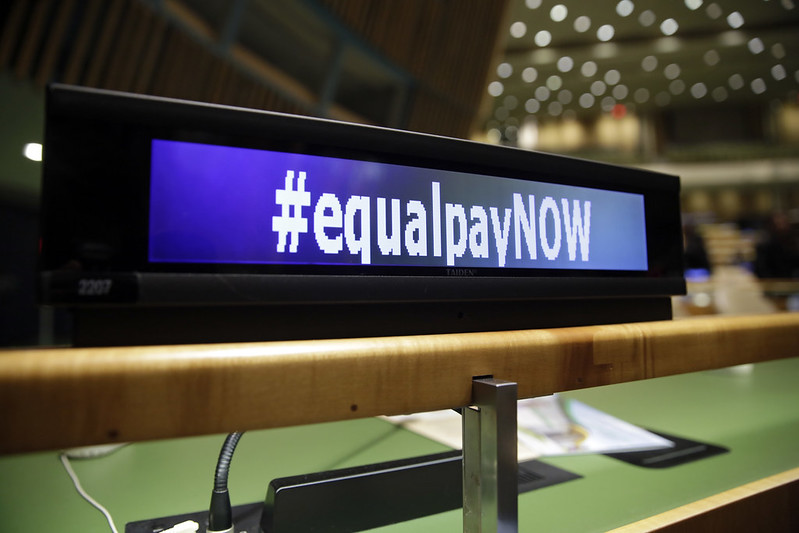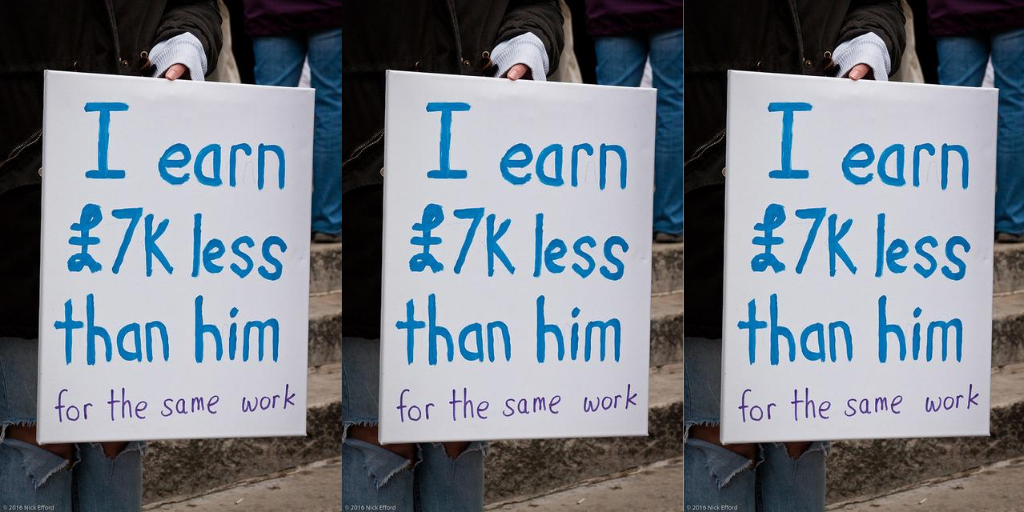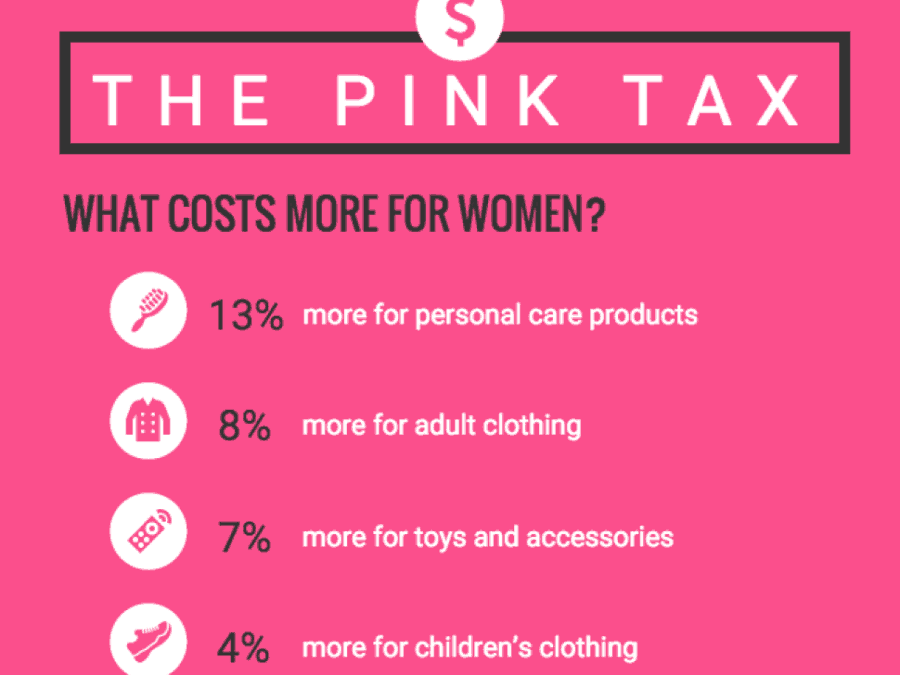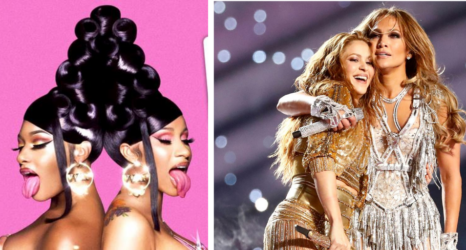Tools of the Patriarchy is a column on the tools that establish men’s dominance in society, or, in other words, uphold the patriarchy. Whether or not these tools are used intentionally, they contribute to a world in which women are not equal to men.
This week, we’ll be discussing everyone’s favorite conversation topic: money.
Unequal Pay for Equal Work
The wage gap has plagued the U.S. since women entered the workforce.
The Equal Pay Act was signed in 1963, and since then, the gap has been closing very slowly. In fact, in 1963, full-time working women only made 0.59 cents to the working white man’s dollar. In 2018, that number was up to 0.79 cents. And in the first quarter of 2020, women earned 80.4 percent of what men earned.
If you do the math, that means that in each year, the wage gap closed by less than a cent. At that rate, the gap won’t fully close until 2059. And for the past 13 years, growth has remained relatively stagnant, hovering around 80-83 percent.
That means over a lifetime, women who graduate college and work a full time job will lose 1.2 million dollars, according to estimates from Evelyn Murphy, president of the WAGE Project.

The History of The Wage Gap
In the second half of the 20th century, women began to enter the workforce at a much higher rate—working longer hours and earning higher degrees than before.
But despite high rates of working women, the wage gap persists.
Why? First, women are more likely to be driven out of the workforce than men.
Additionally, because of women’s larger caregiving role in many households, women tend to have less work experience than men. As of 2019, only 19 percent of workers had access to paid family leave—meaning women tend to work less hours, and thus earn less money, therefore widening the gap.
One of the biggest reasons is, of course, plain, old fashioned, discrimination. Even though gender discrimination at work became illegal in 1963, that hasn’t seemed to stop many businesses from continuing to discriminate as they like.
WOC Disproportionately Affected
This kind of discrimination disproportionately affects women of color and tends to bubble underneath the surface in companies that discourage open communication about wages amongst their employees.
Unsurprisingly, women of color are significantly more fiscally oppressed for equal work than white women, and many minorities—such as subgroups of certain cultures, immigrant and trans women—are left out of the wage-gap conversation altogether.

Statistically speaking, Black women likely will have to work 19 months to earn what a non-Hispanic white man will earn in 12. That’s seven whole extra months, working the same exact job, to receive equal pay for equal work.
Something is quite wrong here.
The atrocious wage gap explains the ever-encompassing wealth gap as well. In 2013, the median white household had about 13 times the wealth than a median Black household.
One may say education is the answer to combatting this wage, and wealth, distribution problem. If so, then why is the average white adult man who dropped out of high school still making 70 percent more than the average Black adult with a college degree?
We Need to Level the Playing Field
Growing movements advocate for equal pay for equal work, but the astonishing fact is that equal pay is apparently not even being offered for superior work. Out on the soccer field, the U.S. women’s team takes the cake, so one would think that their pay should reflect that.
It doesn’t.
While the U.S.’s women’s national soccer team is ranked number one in the world and contributes more revenue to the U.S. Soccer Federation than the men’s team, they receive a mere fraction of what male soccer players do.
According to the Washington Post, there remains a large gap between men’s and women’s World Cup bonuses.
“When the female players have appeared to make about the same or more money, they’ve had to turn in consistently outstanding performances on the world stage. Even with those feats, earning the same amount as the men’s soccer players was near-impossible under the previous collective-bargaining agreement.”
The team filed a lawsuit regarding the unequal nature of their pay and treatment in March of 2019, despite their outstanding performance—but the lawsuit was ultimately dismissed by a federal judge, who claimed the women were offered the men’s deal for their contract, and declined it. This deal was a collective bargaining agreement (where players would be compensated whether they played or not).
In response, the team co-caption, Megan Rapinoe noted:
“We asked to be under the men’s contract, and it was repeatedly refused to us—not only in the structure but in the total compensation. If we were under that contract, we would have earned at least three times higher.”
How to Combat the Pay Gap
While legislative pay reform is slow-coming and often seemingly unattainable, it is important step of the larger process of change legislation. Acts like the Paycheck Fairness Act are key to enacting real change, but there also needs to be other, more “on the ground” work to combat this extensive issue.
Since pay reform doesn’t appear to be on the horizon any time soon, it’s time to take matters into our own hands.

Women should not be punished for being, statistically speaking, the dominant caregiver in most family situations. Without paid sick days, paid family and medical leave women will continue to be at a significant disadvantage.
Additionally, women attaining higher education (specifically when women have higher education than men) and unionization are both big factors in lessening (and ideally, closing) the wage gap.
Most importantly, know your worth, and fight for it. That means: Don’t be afraid to advocate for yourself by asking for raises and negotiating salaries.
And That’s Not All, Folks…
The Money Tool is a big one when it comes to systemic sexism and income inequality, and understanding the intersections between the patriarchy and capitalism are key to understanding the path towards lasting change.
And even beyond the broader topics we’ve covered, women are systemically financially disadvantaged through many frustrating and intricate laws, such as the pink tax.

If, as mentioned in the chart above, it costs more to be a woman and to offset something as simple as our monthly period … that means the wage gap is even bigger than we speculated. If women do not make as much money as men, and have to spend more money than men for personal care reasons, where does that fiscally leave women?
Additionally, something as simple as men paying on a date, as we covered in our chivalry article of the column, is further complicated when it comes down to the dollar.
Gender equality is an important aspect of a relationship, and many women believe in splitting costs as the correct way to establish and maintain equal grounds. While splitting drinks or paying for your dates ice cream is kind and egalitarian, what does that mean when you are making less than 0.81 cents to his dollar? Or an amount that could be as low as 0.54 cents (for Hispanic and Latino women) to a white man’s dollar?
While money, definitely, is not everything—it is infused into the way we live. And as long as our society functions in a capitalistic manner, our work can and will be valued with a dollar amount.
This means we must fight until women are earning every last cent as much as men make.





